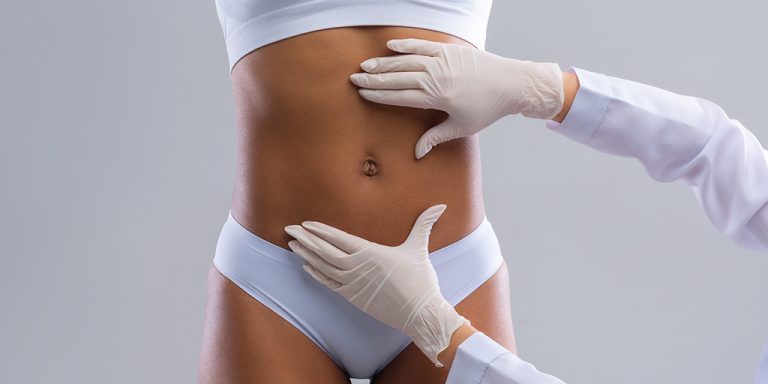Facial Fat Transfer Gone Wrong: Risks & Solutions Explained
Posted on: April 21, 2024
Overview of Fat Grafting Risks
Infection Risk
Infections are a real concern in any surgical procedure, including facial fat grafting. They can range from mild skin infections to more serious, deep tissue issues. Proper sterilization and antibiotic prophylaxis are crucial to mitigate this risk.
Patients must follow post-operative care instructions closely to prevent infection. This includes keeping the area clean and monitoring for signs of infection like redness, swelling, or unusual discharge.
Fat Embolism
Fat embolism is a rare but serious complication where fat enters the bloodstream and blocks blood vessels. It can lead to critical conditions such as stroke or respiratory failure.
This risk underscores the importance of technique and precision during fat extraction and injection. Experienced surgeons use specific methods to minimize the likelihood of fat entering the bloodstream.
Skin Necrosis
Skin necrosis involves the death of skin cells due to insufficient blood supply. It can result from overly aggressive fat injection or poor technique, leading to unsightly scars or the need for further corrective surgery.
Ensuring adequate blood flow during the procedure is key to preventing skin necrosis. Surgeons must balance the desire for volume with the safety of surrounding tissues.
Patient Selection
Not everyone is a good candidate for facial fat grafting. A thorough preoperative assessment helps identify individuals at higher risk for complications.
Factors such as smoking status, underlying health conditions, and previous facial surgeries play a role in patient selection. Careful evaluation ensures that only suitable candidates proceed with surgery.
Operator Skill
The surgeon’s experience and skill level significantly impact the outcome of facial fat grafting. Choosing a qualified surgeon who specializes in this procedure can greatly reduce risks.
Surgeons with extensive experience in fat grafting are better equipped to handle unexpected challenges and achieve optimal results while minimizing complications.
Understanding Facial Fat Necrosis
Fat Necrosis
Fat necrosis refers to the death of fat cells, a complication that can arise after facial fat transfer. Patients may experience pain, tenderness, and erythema (redness of the skin) in the affected areas. These symptoms indicate an underlying issue where transferred fat cells fail to integrate properly, leading to their demise.
The biological process behind fat necrosis involves an inflammatory response triggered by the body. It identifies the transferred fat as a foreign substance, launching a defense mechanism that results in fat cell death. This condition not only affects the aesthetic outcome but also poses a challenge for recovery.
Clinical Case
A 36-year-old woman underwent autologous fat transfer to enhance her nasolabial folds. Unfortunately, she developed signs of fat necrosis post-procedure. Her case highlights clinical challenges in diagnosing and treating this condition effectively.
Treatment for her involved managing inflammation and ensuring close monitoring to prevent further complications. Her situation underscores the importance of selecting experienced practitioners for such procedures and understanding potential risks.
Complications in Fat Transfer Procedures
Rapid Absorption
Rapid fat absorption is a common issue following facial fat transfer. It can lead to uneven skin texture and the necessity for additional treatments. Factors like damaged fat cells during extraction or injection contribute to this complication. Patients might notice diminishing results sooner than expected, often within months.
Cyst Formation
Cysts can develop when transferred fat does not integrate well with the recipient site. This complication may cause lumps and discomfort. Overfilling an area or using high-pressure injection techniques often leads to these unwanted outcomes. Such issues necessitate further medical intervention to correct.
Fat Hypertrophy
In some cases, the transferred fat may grow, leading to facial fat hypertrophy. This results in disproportionate facial features that can be challenging to correct. The root cause often ties back to overfilling or the body’s unpredictable response to the grafted fat.
Serious Risks
Fat embolism and blindness represent rare but severe risks associated with facial fat transfers. These occur when fat enters the blood stream and travels to critical organs or when it blocks blood supply to the eyes, respectively. Such complications underscore the importance of choosing an experienced surgeon for any fat grafting procedure.
Managing Necrosis After Fat Transfers
Treatment Protocol
Following complications in fat transfer procedures, managing necrosis requires a comprehensive approach. Oral prednisolone is often prescribed to reduce inflammation. Dermatologists may also recommend topical tacrolimus to aid in the healing process. For more severe cases, intralesional triamcinolone injections are utilized to target affected areas directly.
This multi-faceted treatment helps mitigate the damage caused by necrosis, aiming for recovery without invasive intervention.
Surgical Removal
When non-invasive treatments don’t suffice, surgical removal of necrotic tissue becomes necessary. This involves staged serial excisions, a method where surgeons remove damaged tissue gradually over multiple sessions. It minimizes scarring and allows for careful assessment of healing between stages.
Scar revision techniques are employed alongside to improve aesthetic outcomes, ensuring that the final appearance is as natural as possible.
Laser Surgery
Dermatological laser surgery plays a pivotal role in enhancing cosmetic results post-necrosis. Lasers can reduce the appearance of scars and improve skin texture significantly.
Patients benefit from this advanced technology, experiencing improved self-esteem as their skin’s appearance is restored closer to its pre-procedure state.
Autologous Fat Grafting Challenges
Graft Survival
Ensuring graft survival is a major hurdle in autologous fat grafting. The process involves transferring fat from one part of the body to another, like the cheeks, requiring precision and expertise. Not all transplanted fat survives the move. Experts must carefully handle and process the human adipose tissue to maximize viability.
They use specialized techniques during extraction to minimize damage to fat cells. Yet, despite these efforts, some loss is inevitable. This unpredictability affects outcomes, sometimes leading to uneven results or the need for additional procedures.
Immunogenicity Risks
Minimizing immunogenicity risks stands out as another critical challenge. Although using one’s own fat reduces rejection risks, complications can still arise. The body might react to the transferred fat as if it were a foreign substance.
This reaction can lead to inflammation or more serious issues, affecting both health and cosmetic results. Practitioners take numerous precautions to reduce these risks, ensuring that fat is correctly purified before reinjection.
Technical Aspects
The technical aspects of autologous fat grafting significantly impact success rates. Key factors include fat aspiration technique, cannula size, and multilayered placement. Each plays a crucial role in preserving the integrity of fat cells during transfer.
Moreover, effective centrifugation of harvested fat is essential. This process separates viable fat cells from damaged ones and impurities. Proper centrifugation minimizes complications and enhances graft survival by ensuring only healthy, intact cells are reintroduced into target areas like the cheeks.

Systematic Review of Grafting Complications
Minor Issues
Fat grafting, while often successful, can lead to minor complications. These include temporary swelling and bruising at both the donor and recipient sites. Patients commonly report these symptoms, but they usually resolve without intervention.
Minor issues can cause discomfort. Yet, they rarely affect the overall success of the procedure.
Major Concerns
More severe complications from facial fat transfer can significantly impact patient outcomes. Resultant scarring and asymmetry are among the top concerns. In some cases, overcorrection or undercorrection leads to dissatisfaction with the appearance.
Infections and fat necrosis present serious health risks. They require immediate medical attention. These major concerns highlight the need for skilled surgical execution and post-operative care.
Statistical Data
Research shows complication rates vary widely across studies. However, a consensus among medical societies suggests that severe complications are less common than minor ones. This data is crucial for setting realistic expectations for patients considering this surgery.
Understanding these statistics helps in evaluating the risk-vs-benefit ratio of undergoing autologous fat grafting.
Prevention Strategies
Literature on fat grafting emphasizes the importance of meticulous technique and patient selection in preventing complications. Surgeons must adhere to best practices outlined by leading medical societies to minimize risks.
Preoperative planning and thorough patient education play critical roles in avoiding adverse outcomes. These strategies ensure better preparedness for any potential complications.
Preventing and Addressing Injection Issues
Patient Prep
Proper patient preparation is crucial for minimizing risks associated with facial fat transfers. This includes thorough consultations to understand patient expectations and clearly outline potential complications.
Doctors must assess the treatment area meticulously, ensuring it’s suitable for fat transfer. Photographic documentation before the procedure helps in planning and can serve as a reference point during recovery.
Technique Refinement
The technique used during fat transfer plays a pivotal role in its success or failure. Practitioners should employ meticulous washing of residual blood from harvested fat to reduce infection risk. Using tumescent anesthesia can improve the comfort and safety of the procedure.
Ongoing education and training are essential for practitioners. They ensure that techniques are refined and updated, aligning with the latest safety standards. This commitment to improvement can significantly decrease the chances of adverse outcomes.
Postoperative Care
Aftercare is just as important as the procedure itself in preventing complications. Patients should receive clear instructions on managing swelling and potential signs of infection. Regular follow-ups enable doctors to monitor recovery and address any issues promptly.
Summary
Navigating the complexities of facial fat transfer procedures requires understanding the risks, including fat necrosis and other complications. Your awareness and proactive management can significantly mitigate these risks. The journey through fat grafting challenges and systematic reviews of complications underscores the importance of choosing experienced professionals and being informed about prevention and addressing potential injection issues.
Armed with this knowledge, you’re better equipped to make informed decisions regarding your cosmetic enhancement journey. Remember, ensuring your safety involves selecting a skilled practitioner and understanding the procedure’s intricacies. If you’ve experienced issues or are considering a facial fat transfer, consult with a reputable specialist to discuss your options and next steps. Your health and satisfaction are paramount. Let’s prioritize them together.
Frequently Asked Questions
What are the risks associated with facial fat grafting?
Facial fat grafting can lead to complications such as infection, asymmetry, over or under correction, and in rare cases, fat necrosis. It’s crucial to choose an experienced surgeon to minimize these risks.
Can facial fat necrosis be treated?
Yes, facial fat necrosis can often be managed through interventions like massage, use of warm compresses, and in some cases, surgical removal of the necrotic tissue. Early detection and treatment are key.
What causes complications in fat transfer procedures?
Complications in fat transfer procedures can arise from factors like improper handling of the fat before injection, incorrect injection technique, or the patient’s own healing response. Experience and technique of the surgeon play a significant role in minimizing these issues.
How is necrosis after a fat transfer managed?
Managing necrosis involves monitoring the affected area closely for signs of improvement or worsening. Treatment may include antibiotics if infection is present, removal of dead tissue, and ensuring good blood supply to the area.
What challenges exist with autologous fat grafting?
Challenges with autologous fat grafting include variability in how much grafted fat survives, potential for uneven results, and risk of complications such as infection or necrosis. Technique and experience significantly impact outcomes.
What does a systematic review say about grafting complications?
Systematic reviews highlight that while complications are relatively rare, they can occur. These include infection, asymmetry, and necrosis among others. The reviews stress the importance of skilled surgeons and proper patient selection.
How can injection issues be prevented and addressed?
Preventing injection issues involves meticulous technique during both extraction and injection of fat, proper patient assessment beforehand, and clear communication about risks and expectations. If issues arise post-procedure, prompt treatment based on the specific complication is essential for resolution.





